|
Nash-Kelvinator Lansing Michigan
World War Two Propeller Plants
Nash-Kelvinator in World War Two
Detroit, MI
1937-1954
(1916-1937 as Nash Motors)
Rest in Peace
This page last updated
12-25-2022.
Nash-Kelvinator came into being in 1937, when
Nash Motors, an automobile manufacturer in Kenosha, WI since 1916,
merged with Kelvinator Appliance, a maker of home appliances in Detroit,
MI. Even though Nash was the senior partner in the merger,
company headquarters were in Detroit rather than Kenosha, because the
CEO was from Kelvinator and wanted to remain there.
In 1954, Nash-Kelvinator merged with Hudson to became American Motors.
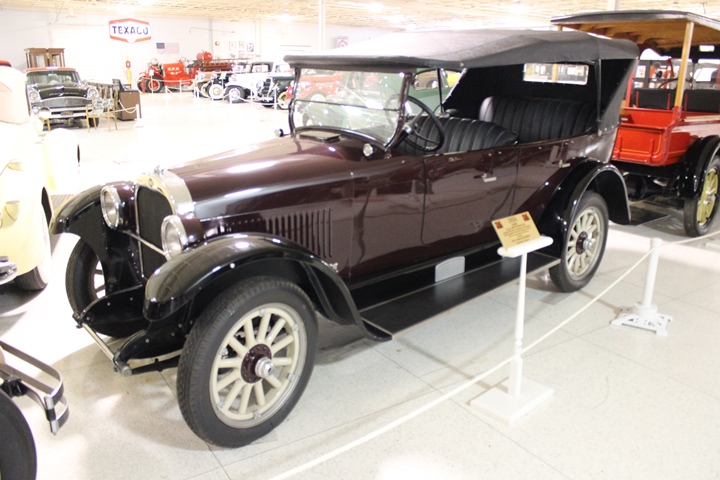
This 1924 Nash touring car was photographed
at the former Kokomo Automotive Museum in Kokomo, IN. Author's
photo.
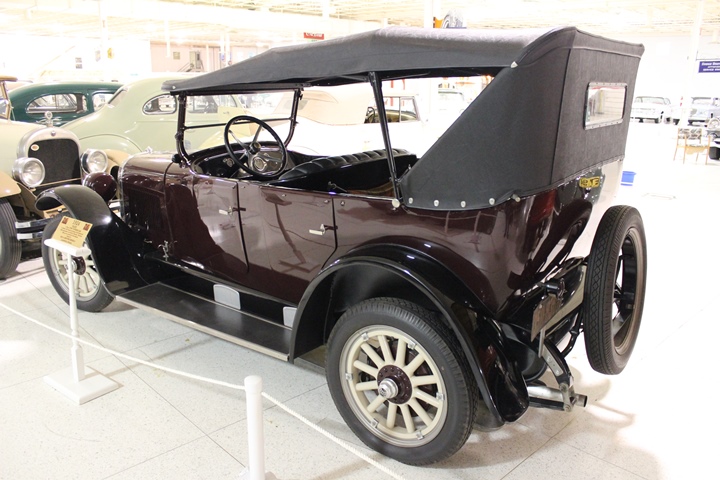
Author's photo.
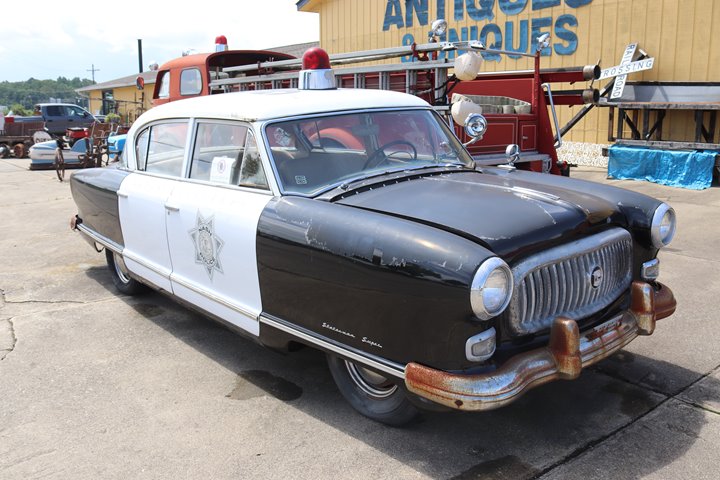
A Nash Statesman Super police car. Author's photo added 8-30-2018.
With the exception of one-ton truck trailers, Nash-Kelvinator did not manufacture products related to its
pre-war product lines during World War Two. In fact, it was one of only
three American automobile manufacturers to build complete aircraft, in
this case the Sikorsky R-6A helicopter. In fact, Nash-Kelvinator
built more helicopters during World War Two than Sikorsky and the rest of the
aviation industry combined.
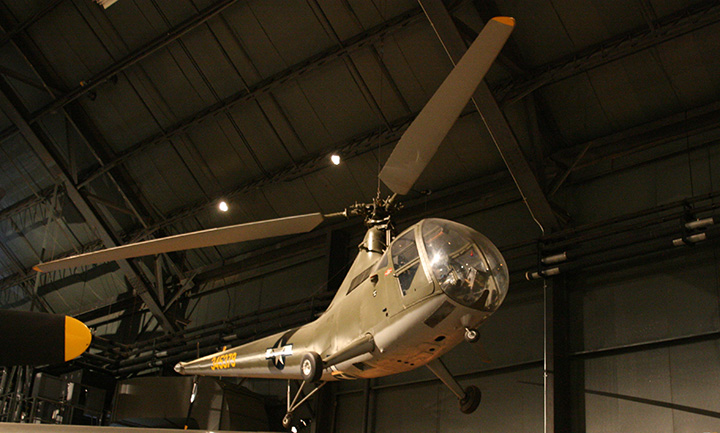
Nash-Kelvinator was the largest producer of
American helicopters during World War Two.
It built the most advanced Sikorsky helicopter design of the war, the
R-6A Hoverfly II, which is shown above at the Air Force Museum in
Riverside, OH. Author's photo.

The Nash-Kelvinator Plant in Lansing, MI won
the Army-Navy "E" Award on September 17, 1943.
The Nash-Kelvinator Ranco Division in Columbus, OH won the Army-Navy "E" Award in January 1943.
Nash-Kelvinator World War Two Production: 650,000 bomb fuzes,
204,000 rocket motors, 200,000 M3 6x30 binoculars and cases. There
was also an unknown quantity of M13
Nash-Kelvinator-built 6X30 type binoculars. The company also
produced 44,628
one-ton two-wheel cargo trailers. Other products included aviation
fuel pressure gauges.
Nash-Kelvinator was 27th among United States
corporations in the value of World War Two production contracts.
Table 1 - Summary of
Nash-Kelvinator Company's
Major World War Two Contracts
The information below
comes from the "Alphabetical Listing of Major War Supply
Contracts, June 1940 through September 1945." This was
published by the Civilian Production Administration, Industrial
Statistics Division. Table added 4-10-2022. |
|
Plant |
Total Contract Amounts |
|
Detroit, MI |
$26,945,000 |
|
Kenosha, WI |
$402,017,000 |
|
Lansing, MI |
$539,433,000 |
|
Racine, WI |
$10,388,000 |
|
Ranco Division, Columbus, OH |
$32,512,000 |
|
Total |
$1,011,295,000 |
Table 2 - Nash-Kelvinator
Company Detroit, MI Plant's
Major World War Two Contracts
The information below
comes from the "Alphabetical Listing of Major War Supply
Contracts, June 1940 through September 1945." This was
published by the Civilian Production Administration, Industrial
Statistics Division. Table added 4-10-2022. |
|
Product - Customer |
Contract Amount |
Contract Awarded
|
Completion
Date |
| Ordnance
Material - Navy |
$8,089,000 |
6-1941 |
8-1943 |
| Refrigerators
- Army |
$221,000 |
7-1942 |
7-1942 |
| Refrigerators
- Army |
$220,000 |
9-1942 |
1-1943 |
| Bomb Fuzes -
Navy |
$4,812,000 |
3-1943 |
5-1944 |
| Helicopters
R6 - Army |
$12,560,000 |
6-1943 |
10-1945 |
| Refrigerators
- Army |
$185,000 |
10-1943 |
2-1944 |
| Rocket Motors
- Navy |
$535,000 |
2-1944 |
9-1944 |
| Rocket Motors
MK9 - Navy |
$123,000 |
8-1944 |
12-1944 |
| Total |
$26,945,000 |
|
|
Table 3 - Nash-Kelvinator
Company Kenosha, WI Plant's
Major World War Two Contracts
The information below
comes from the "Alphabetical Listing of Major War Supply
Contracts, June 1940 through September 1945." This was
published by the Civilian Production Administration, Industrial
Statistics Division. Table added 4-10-2022. |
|
Product - Customer |
Contract Amount |
Contract Awarded
|
Completion
Date |
| Airplane
Engines R2800 - Navy |
$15,311,000 |
3-1942 |
3-1943 |
| Drop Forgings
- Treasury Dept. |
$58,000 |
3-1942 |
6-1942 |
| Forgings -
Treasury Dept. |
$62,000 |
8-1942 |
1-1943 |
| Airplane
Engines R2800 - Navy |
$179,253,000 |
12-1942 |
3-1944 |
| Airplane
Engines R2800 - Navy |
$135,326,000 |
7-1943 |
3-1945 |
| Airplane
Engines R2800 - Navy |
$1,734,000 |
6-1944 |
10-1944 |
| Airplane Engs
R2800 - Navy |
$33,916,000 |
8-1944 |
6-1945 |
| Airplane Engs
R2800 - Navy |
$36,357,000 |
12-1944 |
8-1945 |
| Total |
$402,017,000 |
|
|
Table 4 - Nash-Kelvinator
Company Lansing, MI Plant's
Major World War Two Contracts
The information below
comes from the "Alphabetical Listing of Major War Supply
Contracts, June 1940 through September 1945." This was
published by the Civilian Production Administration, Industrial
Statistics Division. Table added 4-10-2022. |
|
Product - Customer |
Contract Amount |
Contract Awarded
|
Completion
Date |
| Airplane Prop
Assys - Army Air Force |
$11,738,000 |
6-1941 |
8-1942 |
| Airplane Prop
Assys - Army Air Force |
$19,599,000 |
10-1941 |
2-1943 |
| Airplane Prop
Assys - Army Air Force |
$66,679,000 |
1-1942 |
8-1943 |
| Airplane Prop
Assys - Army Air Force |
$26,922,000 |
7-1942 |
9-1943 |
| Airplane Prop
Assys - Army Air Force |
$27,104,000 |
7-1942 |
7-1943 |
| Airplane Prop
Assys - Army Air Force |
$20,548,000 |
8-1942 |
10-1943 |
| Airplane Prop
Assys - Army Air Force |
$86,375,000 |
10-1942 |
7-1945 |
| Airplane Prop
Assys - Army Air Force |
$47,-78,000 |
12-1942 |
8-1944 |
| Airplane Prop
Assys - Army Air Force |
$18,430,000 |
9-1943 |
2-1944 |
| Airplane Prop
Assys - Army Air Force |
$73,068,000 |
5-1943 |
1-1945 |
|
Airplane Prop Assys - Army Air Force |
$6,401,000 |
6-1943 |
10-1944 |
| Airplane Prop
Assys - Army Air Force |
$12,550,000 |
8-1943 |
8-1944 |
| Airplane Prop
Assys - Army Air Force |
$23,871,000 |
12-1943 |
3-1946 |
| Airplane Prop
Assys - Army Air Force |
$65,049,000 |
3-1944 |
8-1945 |
| Airplane Prop
Assys - Army Air Force |
$34,021,000 |
6-1944 |
6-1945 |
| Total |
$539,433,000 |
|
|
Table 5 - Nash-Kelvinator
Company Racine, WI Plant's
Major World War Two Contracts
The information below
comes from the "Alphabetical Listing of Major War Supply
Contracts, June 1940 through September 1945." This was
published by the Civilian Production Administration, Industrial
Statistics Division. Table added 4-10-2022. |
|
Product - Customer |
Contract Amount |
Contract Awarded
|
Completion
Date |
| Trailers -
Army |
$4,174,000 |
12-1940 |
10-1941 |
| Trailers -
Army |
$212,000 |
10-1941 |
3-1942 |
| Trailers -
Army |
$453,000 |
11-1941 |
4-1942 |
| Trailers -
Army |
$5,549,000 |
1-1942 |
8-1942 |
| Total |
$10,388,000 |
|
|
Table 6 - Ranco Division of
Nash-Kelvinator Company Columbus, OH Plant's
Major World War Two Contracts
The information below
comes from the "Alphabetical Listing of Major War Supply
Contracts, June 1940 through September 1945." This was
published by the Civilian Production Administration, Industrial
Statistics Division. Table added 4-8-2022. |
|
Product - Customer |
Contract Amount |
Contract Awarded
|
Completion
Date |
| Optical
Equipment - Army |
$8,817,000 |
10-1941 |
4-1943 |
| Optical
Equipment - Army |
$2,631,000 |
10-1941 |
4-1943 |
| Gages - Army |
$823,000 |
4-1942 |
2-1943 |
| Optical
Equipment - Army |
$1,425,000 |
8-1942 |
2-1944 |
| Airplane
Instruments - Army |
$4,890,000 |
9-1942 |
5-1945 |
| Binocular
Parts - Army |
$433,000 |
9-1943 |
2-1944 |
|
Binocular Assemblies - Army |
$378,000 |
2-1943 |
5-1944 |
| Binoculars -
Army |
$494,000 |
5-1943 |
12-1943 |
| Binoculars -
Army |
$1,540,000 |
8-1943 |
6-1944 |
| Binoculars -
Army |
$3,546,000 |
11-1943 |
6-1944 |
| Binocular
Parts M3 - Army |
$51,000 |
3-1944 |
3-1944 |
| Pressure
Gages - Army |
$275,000 |
5-1944 |
5-1945 |
| Binocular
Parts M7 - Army |
$86,000 |
8-1944 |
1-1945 |
| Binoculars
M13 - Army |
$5,300,000 |
10-1944 |
4-1945 |
| Pressure
Gages - Army |
$604,000 |
10-1944 |
7-1945 |
| Binocular
Parts M7 - Army |
$234,000 |
11-1944 |
12-1944 |
| Binoculars
M13 - Army |
$4,350,000 |
11-1944 |
12-1945 |
| Binocular
Parts M6 - Army |
$64,000 |
12-1944 |
1-1945 |
| Binocular
Parts M3 - Army |
$1,586,000 |
1-1945 |
6-1945 |
| Pressure
Gages - Army |
$258,000 |
2-1945 |
9-1945 |
|
Pressure Gages TO2 - Army |
$143,000 |
3-1945 |
9-1945 |
| Pressure
Gages - Army |
$372,000 |
4-1945 |
2-1946 |
| Fuel Pressure
Gages - Army |
$98,000 |
5-1945 |
6-1946 |
| Pressure
Gages - Army |
$114,000 |
5-1945 |
10-1945 |
| Total |
$32,512,000 |
|
|
18,082 R-2800 Pratt & Whitney Radial
Aircraft Engines: These included the R-2800-8 for the Vought F4U Corsair,
the R-2800-10 for the Grumman F6F Hellcat, and the R-2800-65 for the
Northrop P-61 Black Widow. Production of the R-2800 actually began in
late 1941 in the former
Reo Truck plant at Mt. Hope Ave. and Washington Street in Lansing, MI.
Due to increased production demand for both the R-2800 and Hamilton-Standard
propellers
being built by Nash-Kelvinator in
Lansing, the engine manufacturing was transferred to Kenosha, WI.
Lansing concentrated on propeller production. The Defense Plant Corporation
spent $31.4 million in Kenosha on a new 204,800 square foot plant and equipment to produce
the Double Wasp engine. An average of 9,125 employees worked at the
plant during the war, with peak employment reaching 11,500.
158,134
Hamilton Standard Propellers: Original production began in
the former Reo plant on South Cedar Street, to the east of the main Reo
complex. After the war, the plant became John Bean.
Production later expanded to another former Reo Truck plant at Mt. Hope
and Washington. This plant became propeller manufacturing and
final assembly for Nash-Kelvinator during World War Two.
Motor Wheel used it for a while after the war. Then about 1960, it
became the site of the first big box discount store in
Lansing.
Beyond the 158,134 propeller assemblies completed here were another
85,656 spare blades. My grandfather was in charge of propeller
balancing at this plant, which produced the second highest quantity of
American propellers during World War Two. Both three and four
blade configurations were produced, including the four bladed type for the Vought F4U-4
Corsair and Douglas A-26 Invader.
219 R-6A Sikorsky Helicopters:
Nash-Kelvinator built more helicopters than any other company built during the
Second World War.
|
Table 7 -
Nash-Kelvinator YR-6A and R-6A Helicopters built during World
War Two |
|
Type |
USAAF Serial Numbers |
Quantity |
|
| YR-6A |
43-45316 through 43-45341 |
26 |
|
| R-6A |
43-45342 through 43-45534 |
193 |
Twenty-five were transferred to the British Army. Four
were transferred to the U.S. Navy. |
|
Total |
|
219 |
|
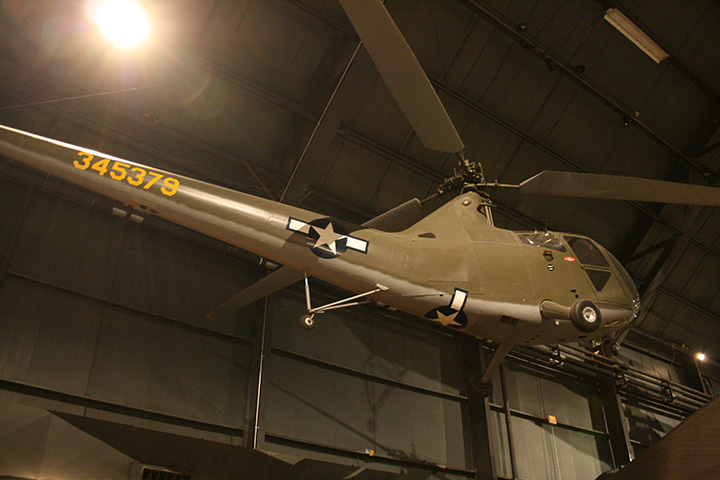
Another view of the Nash-Kelvinator-built
R-6A Hoverfly II at the Air Force Museum. Author's photo.
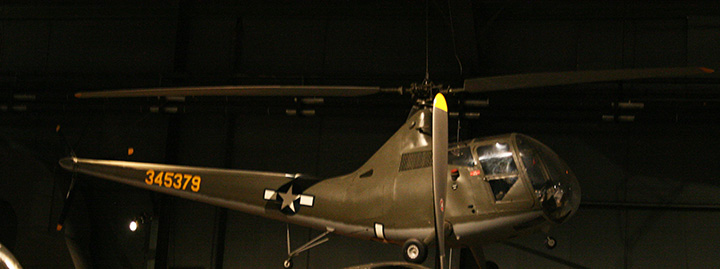
Author's photo.
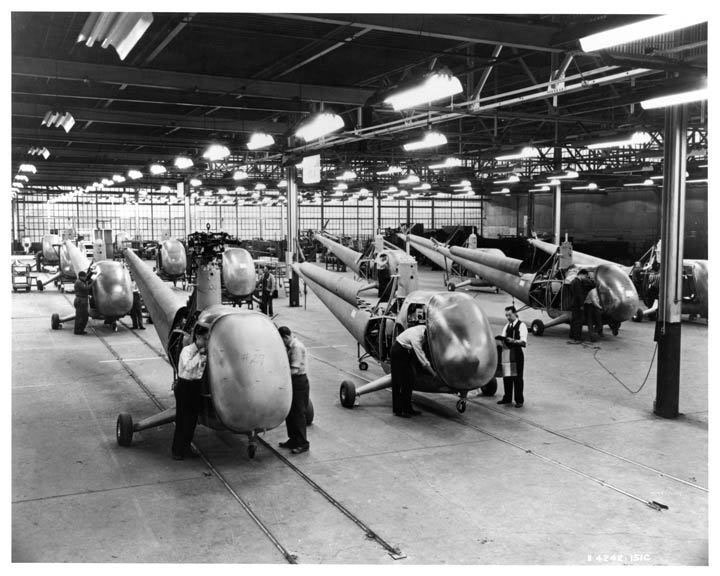
Eleven R-6 helicopters are under
construction in this World War Two era photo of the Nash-Kelvinator
Plant on Plymouth Road in Detroit, MI. Nash-Kelvinator was the
largest manufacturer of
helicopters during the war, producing 219. Sikorsky built 151 helicopters during
the war.
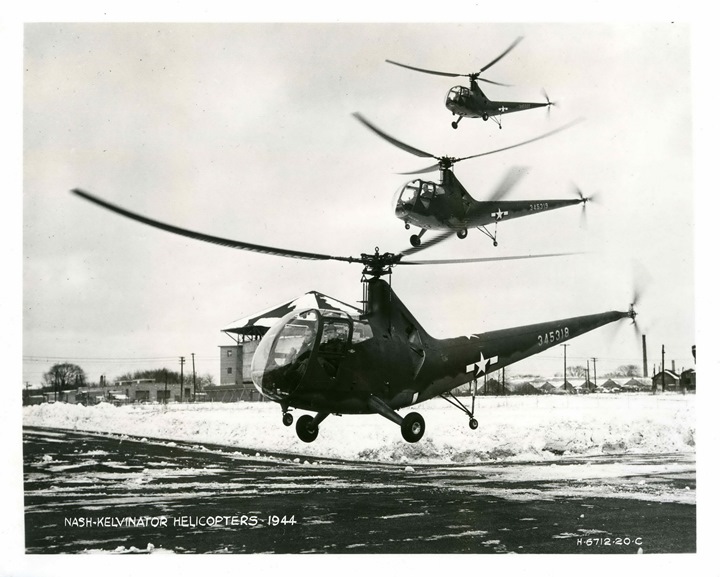
Three Nash-Kelvinator-built Sikorsky R-6
helicopters are airborne at the same time in 1944. Photo courtesy of
Ken Schroeder added 3-14-2016.
Table 8 -
Nash-Kelvinator World War Two Trailers Accepted by Detroit Ordnance, US Army
The information below comes from "Summary Report of
Acceptances, Tank-Automotive Material, 1940-1945."
Published by Army Services Forces, Office, Chief of
Ordnance-Detroit, Production Division, Requirements and
Progress Branch
January 21, 1946. |
|
Type |
1940 |
1941 |
1942 |
1943 |
1944 |
1945 |
Total |
| 1-Ton, 2 Wheel,
Cargo |
|
20,000 |
24,628 |
|
|
|
44,628 |
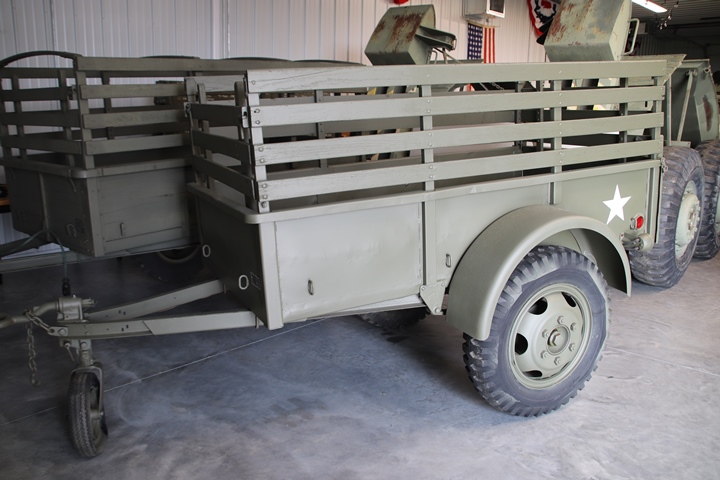
This Nash-Kelvinator-built 1-ton, 2 wheel
cargo trailer is part of the collection at the World War II American
Experience in Gettysburg, PA. I originally published the
Nash-Kelvinator page in September 2013. It took me nine years,
until September 2022, to find a Nash-Kelvinator-built World War Two
trailer. Author's photo added 12-25-2022.
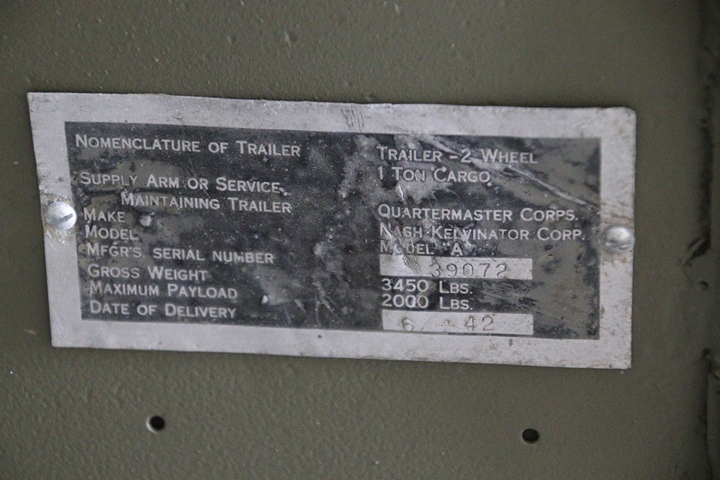
Table 8 shows that Nash-Kelvinator built
44,628 trailers in 1941 and 1942. This one is serial number 39072
and was delivered in June 1942. Author's photo added 12-25-2022.
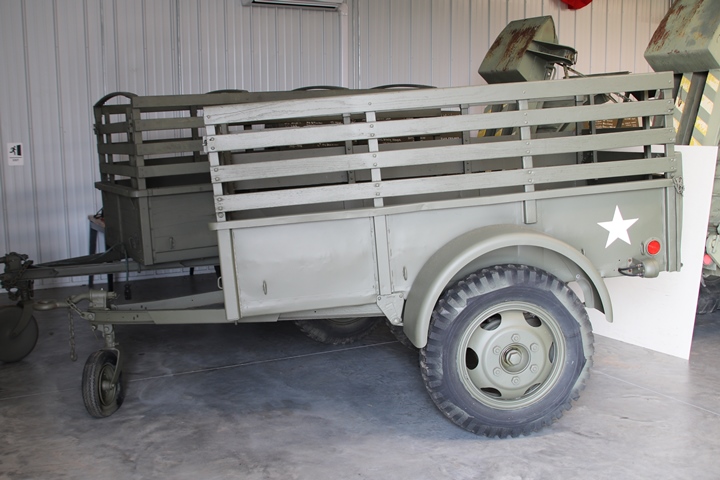
Author's photo added 12-25-2022.
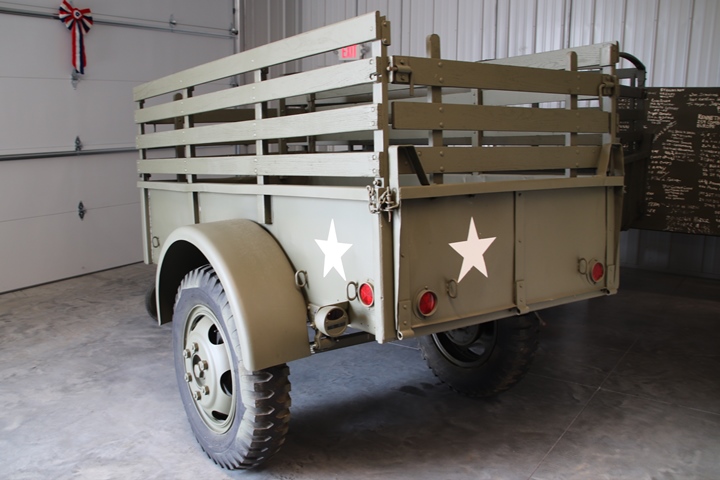
Author's photo added 12-25-2022.
Binoculars:
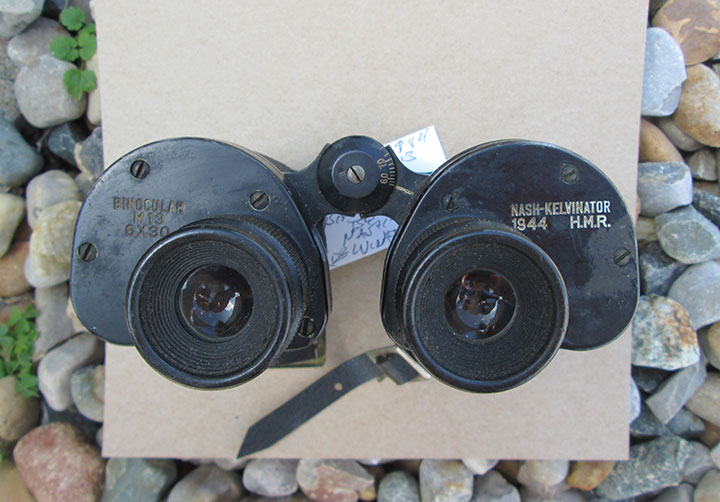
This is a Nash-Kelvinator-built pair of M13 6X30
binoculars for the World War Two war effort. All of the
documentation shows that Nash-Kelvinator made M3 6X30 Binoculars.
Very little information can be found on the M13, and no information can
be found on the difference between the two types. Looking at
online auctions, both types were made and are for sale.
Author's photo.
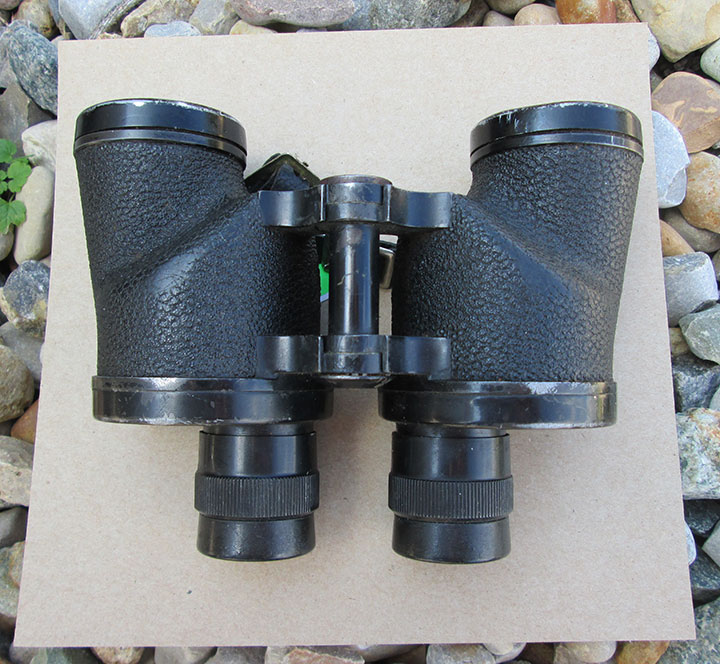
This pair was on sale for $79.50.
Author's photo.
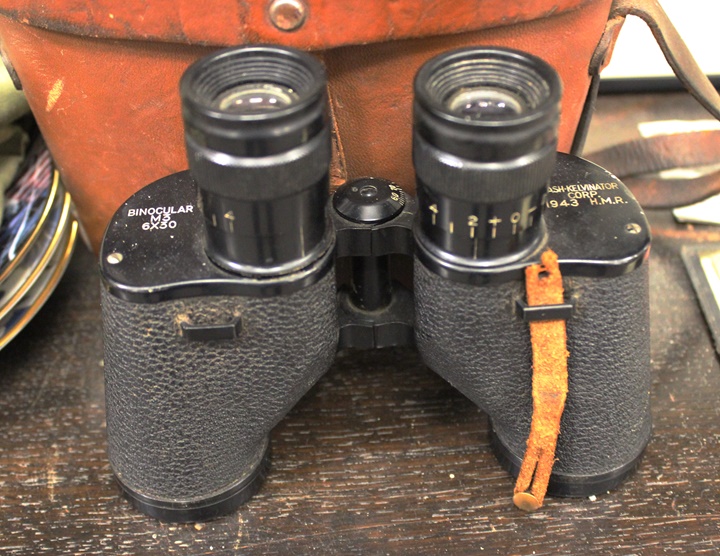
On display at the Vermillion County
War Museum is this pair of 1943 Nash-Kelvinator M3 6x50 binoculars, one
of 200,000 made at the Ranco Division in Columbus, OH. Author's
photo added 11-2-2015.
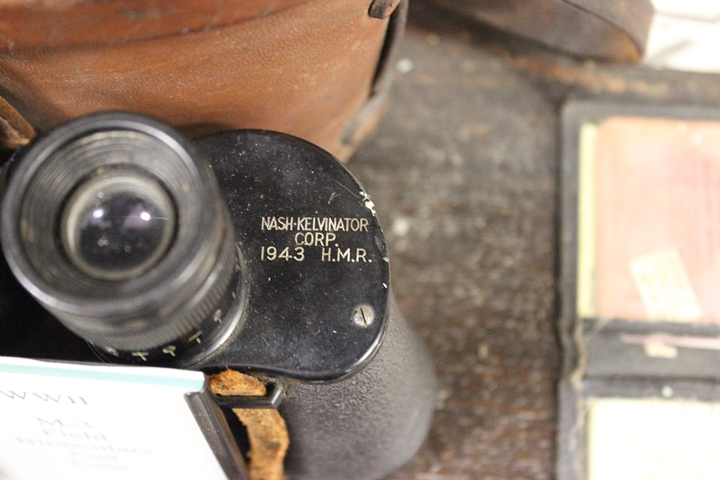
Author's photo added 11-2-2015.
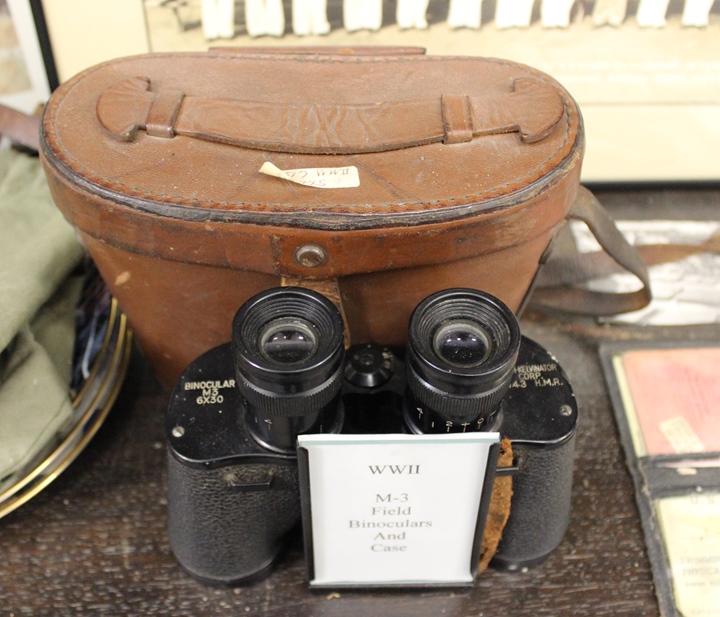
The Ranco Division also made the binocular cases
along with aviation items, including altitude controls
and pressure gauges. Author's photo added 11-2-2015.
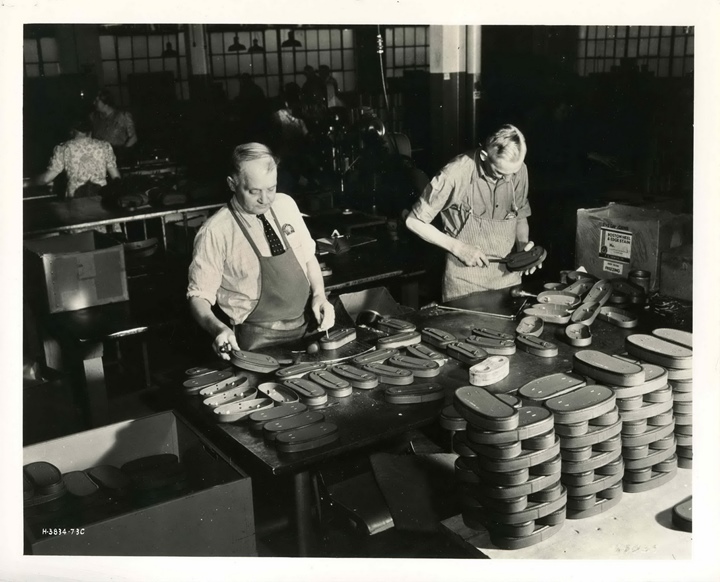
The binocular cases were manufactured in
the Nash-Kelvinator body plant in Milwaukee, WI. Photo courtesy of
Ken Schroeder added 3-14-2016.
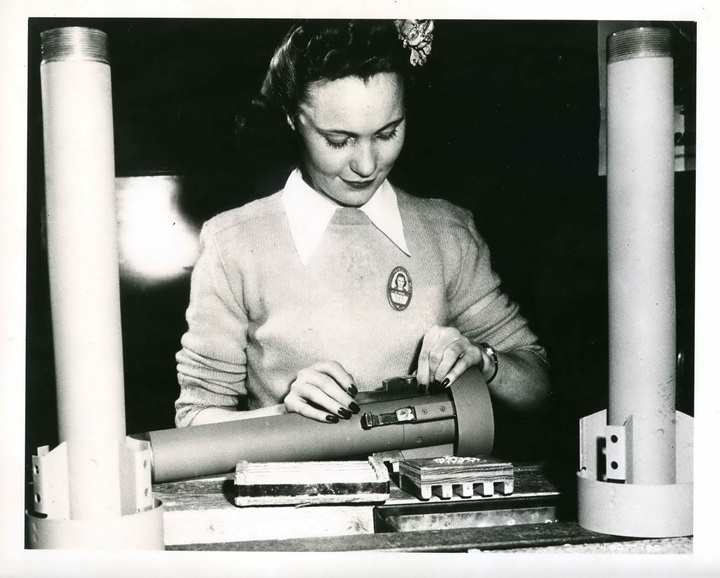
This worker is building one of 204,000
rocket motors manufactured by Nash-Kelvinator during World War Two. Photo
courtesy of Ken Schroeder added 3-14-2016.
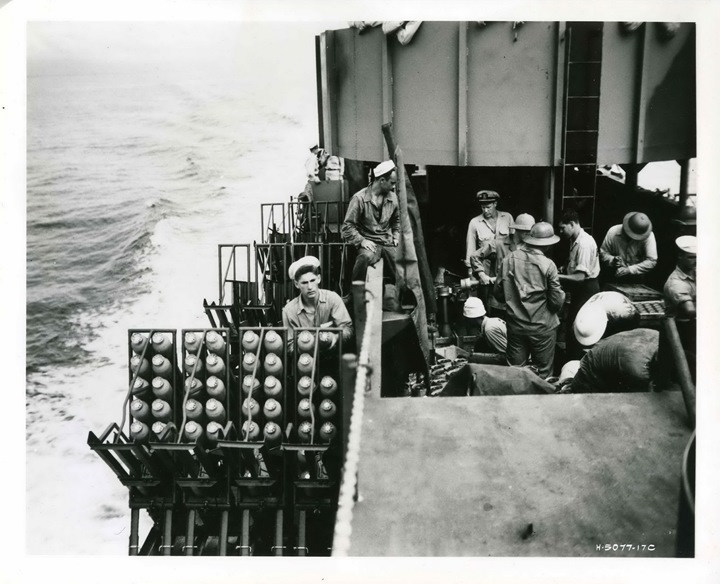
This Nash-Kelvinator publicity photo
shows the warhead added to its rocket motors, ready
to fire on a beach landing in the South Pacific. Photo courtesy of
Ken Schroeder added 3-14-2016.
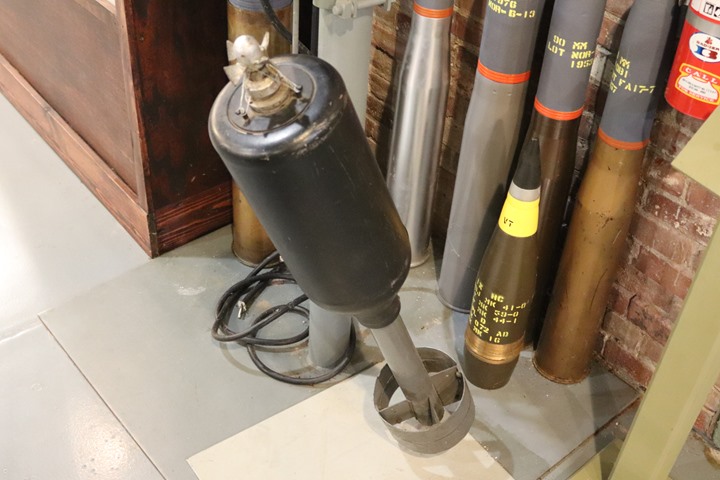
This rocket on display at the Indiana
Military Museum in Vincennes, IN has a rocket motor similar to that
which
Nash-Kelvinator built. Author's photo added 1-22-2018.
Nash-Kelvinator
(Mt. Hope Ave Plant) in Lansing, MI - See the link above for a
complete story on the company's Lansing propeller operation during World War
Two.
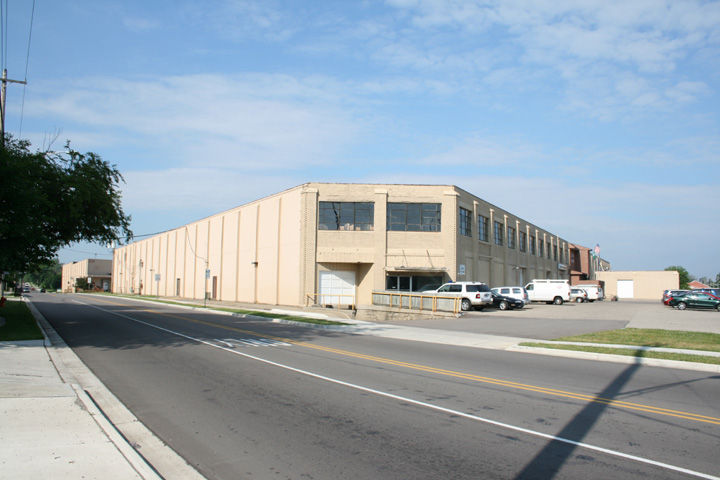
Author's photo.
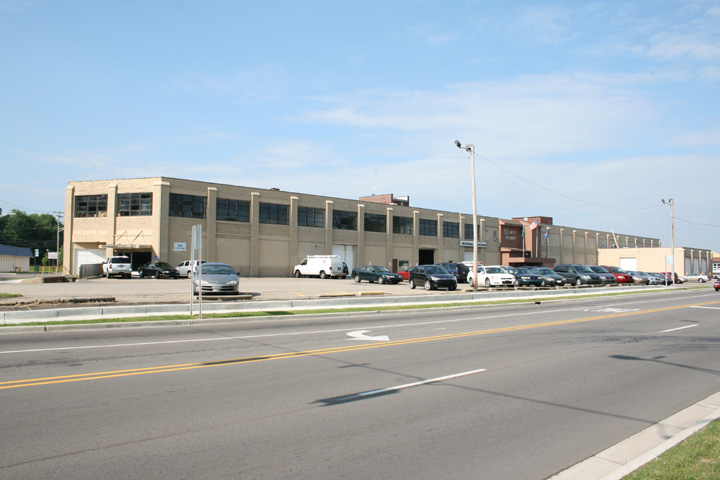
Author's photo.
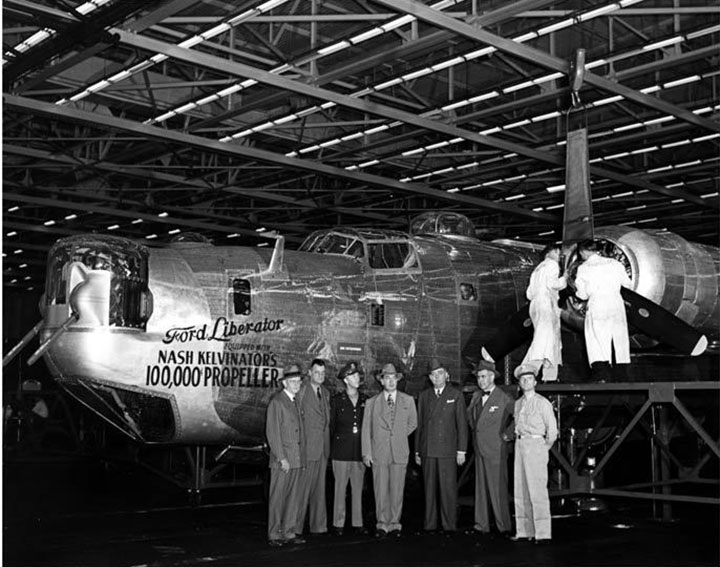
This photo shows the American automotive industry's
significant contribution to the construction of this late model B-24 (J,
L, or M model). Firstly, this is a Ford-built B-24 at the Willow
Run, MI plant. The Lansing, MI Nash-Kelvinator plant built the
propellers being installed, and the 100,000th milestone was
reached. My grandfather, Frank Dominik, while not in the photo,
played an important part in this. He was the supervisor of the
propeller balancing department back in Lansing. It was his
responsibility to assure that the engines on this B-24 were not affected
by vibration issues due to out-of-balance blades. The engines on this aircraft were also provided by U.S. auto companies.
Both Buick and Chevrolet built the Pratt & Whitney R-1830 engines that
powered the Liberator. The .50 caliber machine guns that defended
this aircraft against attacking fighters could have been manufactured by
any one of three General Motors Divisions: AC Spark Plug, Frigidaire, or Saginaw Steering
Gear.
The Pratt & Whitney R-2800 Engine:
|
Table 9 - Nash-Kelvinator-Built Pratt &
Whitney R-2800 Engines |
|
R-2800 Model |
Number of Engines Built |
Aircraft Type |
| R-2800-8 |
1,709 |
F3A-1, FG-1,
F4U-1,1C; F4U-2 |
| R-2800-8w |
3,094 |
F4U-1P(-8W) |
|
R-2800-10 |
1,690 |
P-60A,
XP-60E, F6F-3E,F,H,N,P; F6F-5, P-61, P-61A |
|
R-2800-10W |
9,900 |
F6F-5E,N |
|
R-2800-52 |
334 |
R6D |
|
R-2800-65 |
517 |
P-61A,B |
|
R-2800-99 |
842 |
Post World
War Two Aircraft |
| Total |
18,086 |
|
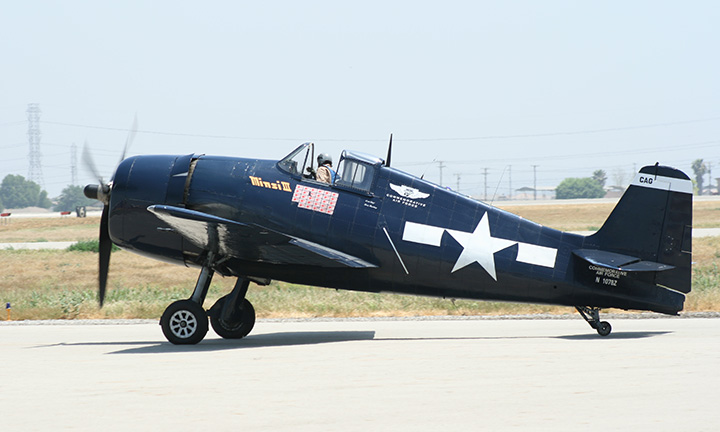
Nash-Kelvinator-built R-2800 engines were
instrumental in winning the Naval aerial war in the Central Pacific.
Grumman F6F-3 and F6F-5 Hellcats swept the Japanese aerial naval forces
from the sky. The Hellcat shot down more Japanese aircraft than
any other American aircraft during World War Two. This totaled
5,160 aircraft. Author's photo added 5-18-2021.
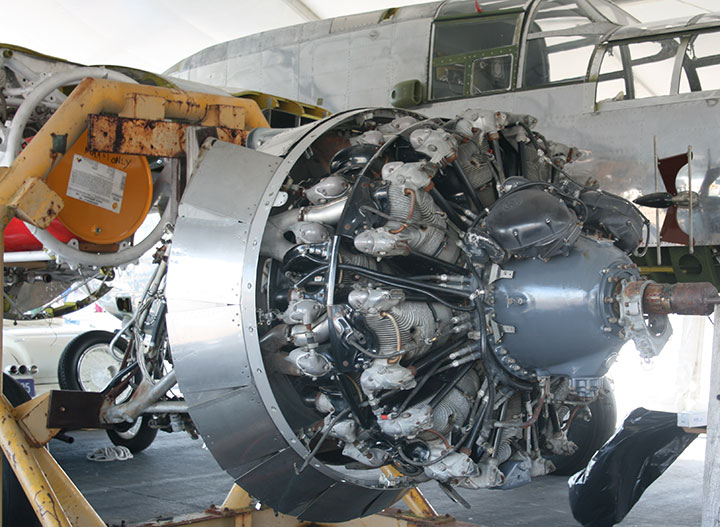
Nash-Kelvinator built 18,086 Pratt & Whitney
R-2800's, like this one shown at the P-61 display at World War Two Weekend
in Reading, PA. They were built in a
new government plant in Kenosha, WI during World War Two. The models
built by Nash-Kelvinator, first built in Lansing, MI and then Kenosha,
WI, went into the Hellcat, Corsair and Black Widow fighters. The
R-2800-65 version of the 2,000 hp engine was on display with the
Black Widow restoration in 2011. Author's photo.

This is one of only four Northrop P-61s "Black
Widows" that still exist in the world, and the only one that will ever
fly again. This P-61 is being rebuilt by the Mid Atlantic Air
Museum in Reading, PA, and was seen on display at the Museum's annual
WWII Weekend in June of 2011. The engine to the left could
very well be a Nash-Kelvinator-built R-2800-65 Model that the company built for the
"Black Widows" during the Second Word War. Author's
photo.
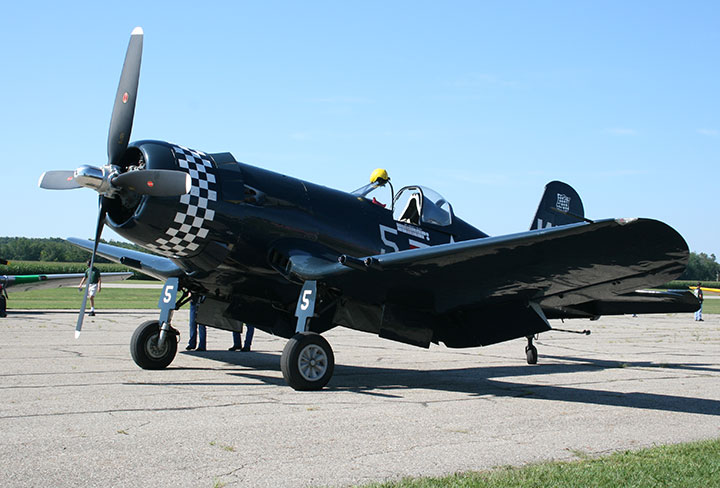
The Vought F4U Corsair with
Nash-Kelvinator-built R-2800 engines destroyed 2,140
Japanese aircraft. The
Corsair was second in the destruction of Japanese aircraft in aerial
combat during the war. Author's photo added 5-18-2021.
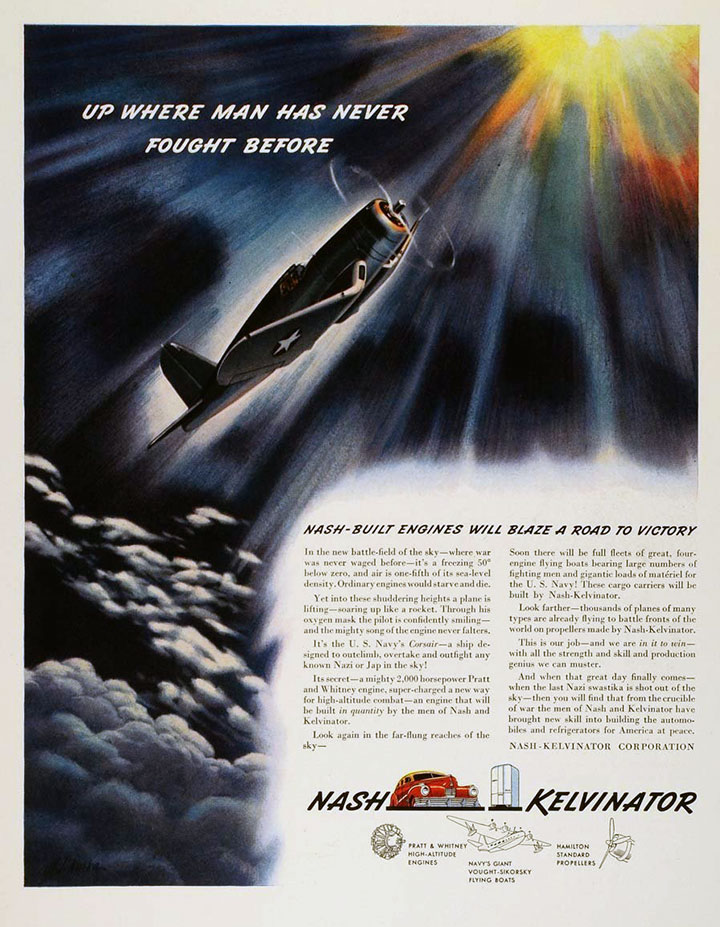
A World War Two era ad shows the Vought F4U Corsair
climbing towards the sun, powered not only by a Nash-Kelvinator-built R-2800
engine, but quite possibly a propeller built in Lansing, MI by my
grandfather.
Sikorsky SJRK-1:
Early in the war, plans called for Nash-Kelvinator to build a Sikorsky-designed four engine sea plane under a licensing agreement. All or
most of the World War Two
magazine advertisements indicated that this was one of the product lines
along with aircraft engines and propellers. Due to
changing military requirements, the need for this type
of aircraft decreased, and the project was dropped. The aircraft had
an experimental designation of XJRK-1. It would have carried 37
passengers. Artist's renditions, as shown below in the
advertisement, are the Sikorsky JR2S that was in production and not a
military secret. Final assembly of the SJRK-1 aircraft would have
been in New Orleans, where the assumption was that it would have been
built adjacent to Lake Pontchartrain and then launched from the lake.
Sub-assemblies would have been made in Grand Rapids, MI and Kenosha, WI.
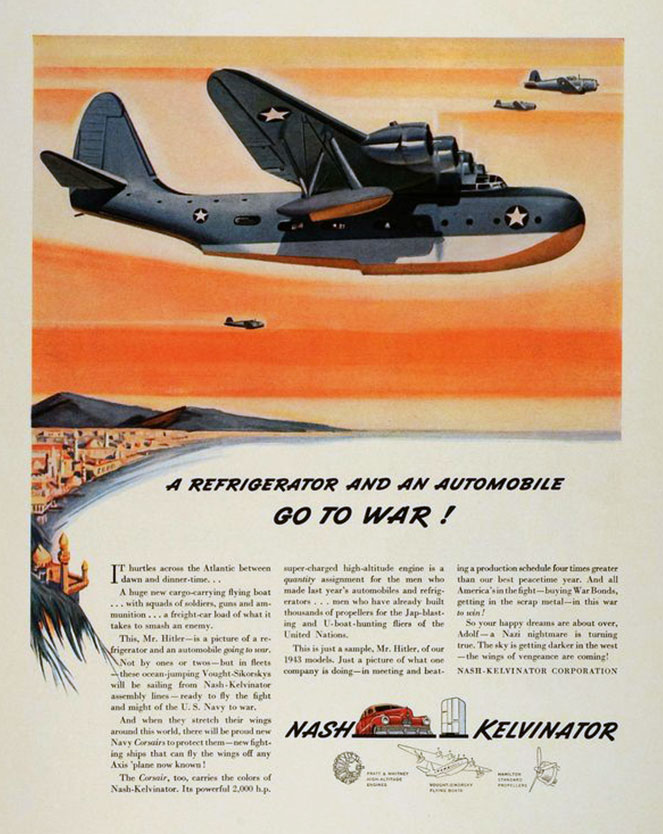
This ad, along with other Nash-Kelvinator ads,
show and make reference to a Sikorsky four engine flying boat that
Nash-Kelvinator was to build, with final assembly being done in a new plant in New
Orleans, LA. The need for this type of aircraft diminished as the war
progressed, as more and larger aircraft carriers were built. The aircraft pictured
here is a JR2S.
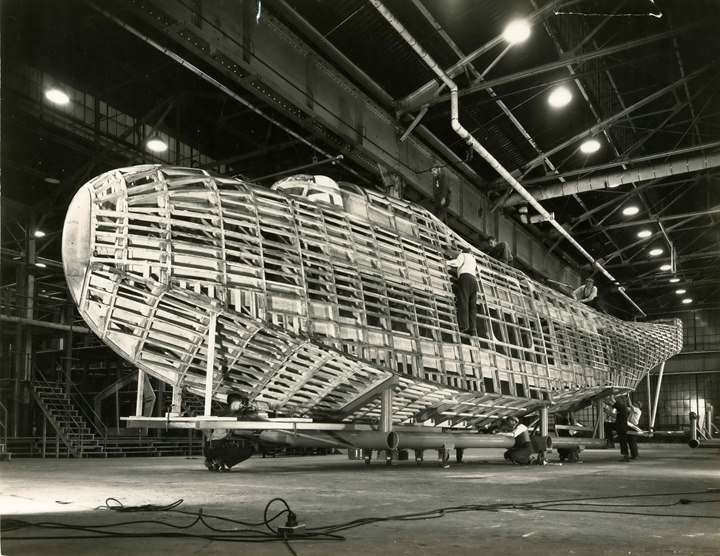
Despite the fact that Nash-Kelvinator
never actually produced the proposed flying boat, it did spend a lot
of time and money on this wooden mock-up at its Milwaukee plant.
Photo courtesy of Ken Schroeder added 3-14-2016.
|































